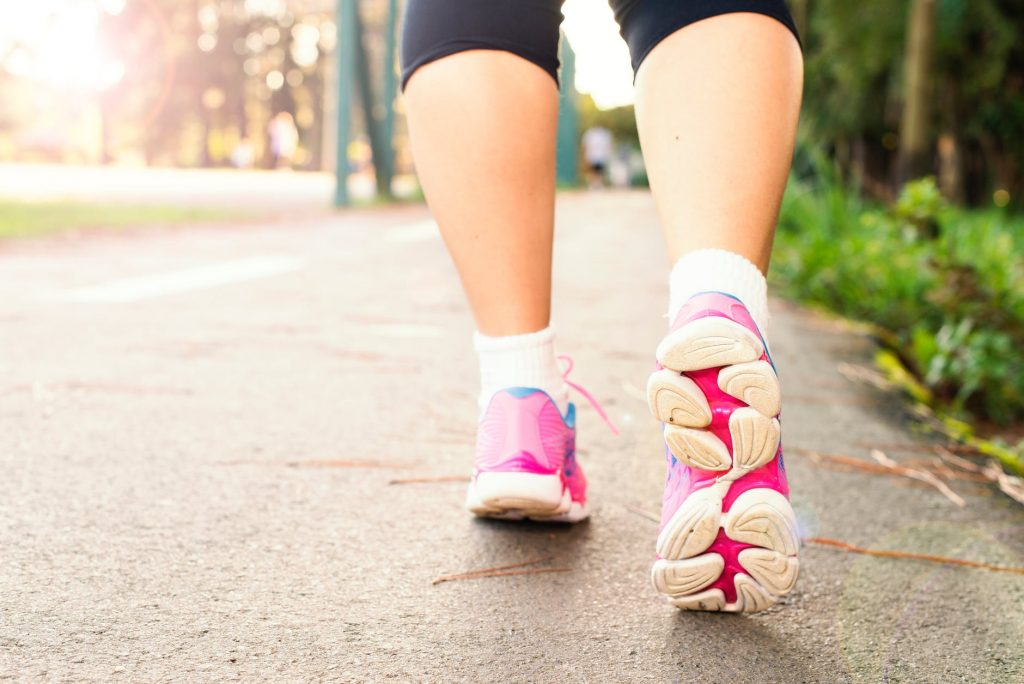The Walking Games
Walking is the most readily available form of physical activity that most people can do regularly. As the days turn darker and the temperatures drop, the innate enjoyment of walking outdoors can make regular walking harder as we spend more time indoors.

The solution? Walking Games.
These are strategies to bring enjoyment and engagement to indoor physical activity. Further, these strategies also sneak in some added of brain health benefit with added cognitive challenge and an emotionally enhanced experience beyond what people expect from “walking.”
Brain games alone are not enough. They can provide some cognitive benefit, but for most of human history, we solved intensely meaningful problems directly related to survival while moving, not sitting on a couch playing a low-stakes brain game or working on a crossword puzzle.
Likewise, any exercise is good for brain health. But when you add cognitive challenge to exercise, the benefits multiply. Conceptually, it’s as simple as considering the difference between the treadmill and a trail for walking. The latter requires using sensory information to consciously choose where and how to take each step.
The strategies below are designed to create a “think and move” experience, all while enhancing the emotional response to movement.
Walking Game 1: Alphabet Walk
- Mark off a rectangular or oval space with cones, water bottles, shoes, pillows, or anything else readily available.
- Within the space, walk to trace letters on the floor with your feet. Use names of favorite movies, books, musical artists or names of friends, family, or pets or perhaps names of travel destinations.
The highly variable direction of movement makes the walking more beneficial and the use of letters of cherished names adds cognitive benefit and enhances the emotional state while walking by keeping favorite pop culture offerings or loved ones front-of-mind while moving.
Walking Game 2: Balloon Tap Walk
- Blow up a balloon and gently tap it as you walk to keep it up by “air dribbling.”
The need to track the unpredictable action of the balloon will result in variable walking speeds and co-coordination of eye-hand movements.
Walking Game 3: Balloon Wall Dribble
- Blow up a balloon and face a wall.
- Tap the balloon into the wall and keep tapping it into the wall, adjusting body position slightly side-to-side to move with the balloon.
Optional add-on for balloon exercises: Use a light-colored balloon and a dark-colored marker. Write letters or numbers on the balloon. Use it to perform any of the following (in increasing order of difficulty):
- Call out the letter or number most visible when tapping the balloon.
- Call out words in the same categories introduced above in “Alphabet Walk”
- Using the numbers, designate a left and right hand for even and odd numbers, then tap the balloon with the corresponding hand. Or, perform simple math like addition or subtraction.
- Combine use of letters and numbers. For example, call out favorite musical artists for letters and use the left-right/even-odd hand tap for numbers.
Walking Game 4: Bounce, Catch…or Fetch
This can be done strolling slowly through any indoor space or standing still. Use a ball, a pet’s toy, a pillow, or any object which you can bounce and/or toss and catch. Bonus brain points for using something without an “easy” shape as it requires more manual dexterity to catch. And if you drop the object, you get some extra essential life skill movement by fetching it from the floor.
Wrap Up
The reason people become less active when spending more time indoors is that the usual ways of moving more indoors are boring – no one is realistically going to take a walk around their house. However, moving consistently is important to our physiology and our brain health regardless of the weather or season.
Using these and other similar strategies that you think of can make staying active when spending more time inside more appealing, and that is the key to making it happen more regularly. You can be an inspired leader to the people you serve when you make things enjoyable, more engaging, and as a result easier to do (so they no longer have to force themselves to do them.)
Brain Health Education for Fit Pros
All physical activity is good for the brain, but the inclusion of specific elements such as coordination, reactivity, partner interaction, attention and memory challenges integrated with physical activity make it even more beneficial. MedFit Classroom’s Alzheimer’s Disease Fitness Specialist course blends current science with common sense to present cutting-edge ideas to optimize the impact that fitness can have in the lives of those you serve who are concerned about or diagnosed with Alzheimer’s.

Article originally printed in canfitpro magazine.
His “800 Pounds of Parents” directly inspired Jonathan’s prolific fitness career. He is a multiple Personal Trainer of the Year Award-Winner (ACE, IDEA, and PFP Magazine), master trainer for the American Council on Exercise (ACE), creator of Funtensity, brain fitness visionary, blogger, international speaker and author. He is the author of MedFit’s Alzheimer’s Disease Fitness Specialist online course.

